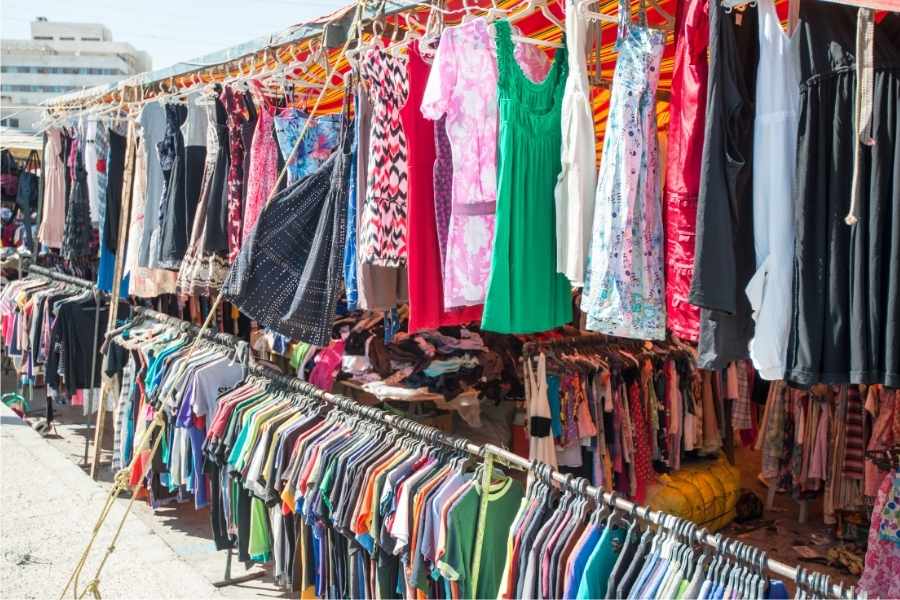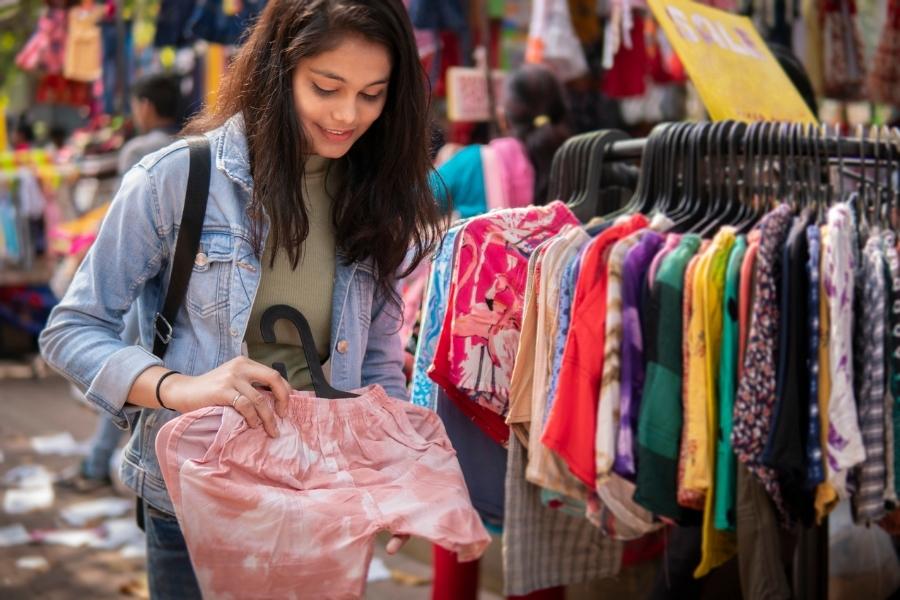Imagine a wardrobe where each piece of clothing tells a story — of previous owners, trends of the days past and a sustainable mode of fashion. That’s the magic of thrifting — a way of shopping for second-hand items — that is well-known among Kolkatans who have always frequented the roadside markets of Gariahat and New Market. But, in recent years, online thrift stores are also making their mark, becoming a go-to choice among Gen Z shoppers, who look for budget-friendly and one-of-a-kind fashion finds.
As the fashion industry continues to be the largest producer of textile waste in the world, thrift stores give pre-loved fashion a second chance, promoting a greener and cleaner environment. My Kolkata spoke to two Instagram thrift store owners in Kolkata — Tanvy Gupta and Samayeeta Maitra — who took us through their journey of running a pre-loved fashion business in a city that is gradually warming up to the idea.
Why Kolkata’s fashion lovers are turning to online thrifting
While Kolkata has always been home to second-hand shopping spots like Gariahat and New Market, modern thrift stores, particularly online ones, offer a curated experience, making it easier for young, fashion-forward shoppers to find trendy items without going through the chaos of street markets.
“Traditional second-hand markets like Gariahat and New Market often involve digging through piles of clothes without knowing where they came from, what size they are, or their quality,” Tanvy, who launched her thrift store Windfall on Instagram after falling in love with the experience of thrift shopping herself during the pandemic, explained. “As store owners, we understand trends, assess what can be repurposed, and prevent quality pieces from ending up in landfills,” she added.
“Modern thrift stores offer a more curated experience — with clean, quality-checked clothes, proper sizing details, attractive packaging, and sometimes, even freebies,” added Samayeeta, who opened her store Thrift By Sam back in April 2023.
Budget friendly or sustainability?
While thrift stores promote sustainability, many shoppers, particularly Gen Z, are primarily drawn to the affordability of their items. “Fast fashion is one of the biggest polluters globally. By buying second-hand, we’re reducing waste and lowering the demand for mass-produced clothing,” Tanvy pointed out.
However, not all customers are drawn to thrift stores for only sustainability. “In Kolkata, most thrift shoppers seem to prioritise budget-friendliness and aesthetics over the environmental aspect,” said Samayeeta, adding that regardless of the reason, thrifting promotes more conscious shopping habits.
Thrifting in Kolkata is witnessing a shift in fashion trends, with vintage, Y2K, and cottagecore aesthetics becoming a hit among the younger generation. “Earlier, people just bought whatever was cheap, but now there’s more intention behind purchases,” notes Samayeeta. “College students, in particular, are looking for statement pieces that help them stand out.”
Popular items include vintage cami tops, flared bottoms and accessories like thrifted belts and jewelry. “While big labels sell well, many customers prioritise aesthetics over just the brand name,” Samayeeta added.
Fighting stigma around second-hand fashion
In India, there still remains a stigma surrounding second-hand clothing. Tanvy highlighted how she often receives reluctance from customers on social media for selling used clothes.
“Yes, there’s definitely a lot of stigma around buying second-hand clothes. You see thrift haul videos online where people show off amazing finds at unbelievably low prices — sometimes as cheap as ₹30 or ₹60. But if you look at the comments, many are negative, saying things like ‘Ye toh used kapde hai (These are used clothes),” Tanvy said, adding that this perception is changing among younger consumers who understand how second-hand shopping benefits our environment.
The challenges of running a thrift business

The operational side of running an online thrift store is equally demanding. From washing, ironing and repurposing clothes to photographing, packaging and managing deliveries — each step requires significant effort Shutterstock
Apart from changing mindsets, running a thrift business comes with a set of challenges. Sourcing clothes is one of the biggest struggles, with vendors often trying to take advantage of thrift store owners. “The vendors are very rude. The moment they realise you're running a business, they try to scam you. It’s tough to maintain a reliable supply chain,” Tanvy shared.
The operational side of running an online thrift store is equally demanding. From washing, ironing and repurposing clothes to photographing, packaging and managing deliveries — each step requires significant effort. Tanvy, currently an English literature student, shared how Kolkata’s humid weather makes drying clothes a challenge and how standing in long queues at the post office for deliveries can be exhausting. “It gets hectic, but the joy of seeing customers happy with their purchases makes it worth it,” she added.
For many thrift shoppers, coming across a unique piece is what makes the experience so exciting. Manzima Dewanjee, who is currently pursuing her Masters in English Literature, shared that she prioritises fashion that is unique and sustainable.
“Thrift shopping is more fun because you never know what new gem you're going to find that day. It is always something so unexpected and a piece of clothing or an accessory just for you. That item has a story of its own,” Manzima shared, adding that regular shopping is way more expensive and that everyone ends up buying the same things.
As the thrift culture in Kolkata continues to grow, it is clear that this is more than just a passing trend. It is a movement towards mindful fashion as Tanvy summed it up: “Even if the motivation to buy second-hand is misplaced — whether it’s to look cool or to find budget-friendly options — I hope that young people eventually come to understand its environmental value,” she signed off.
